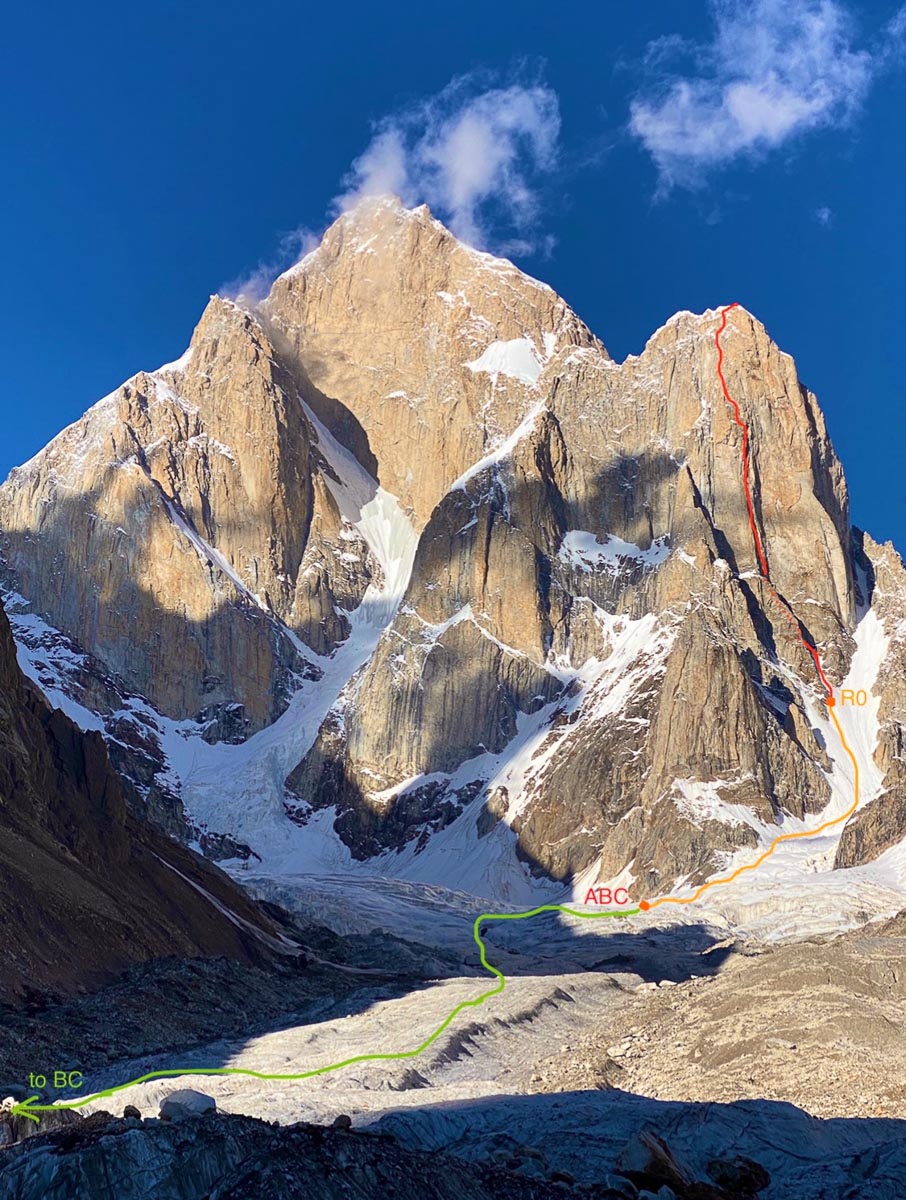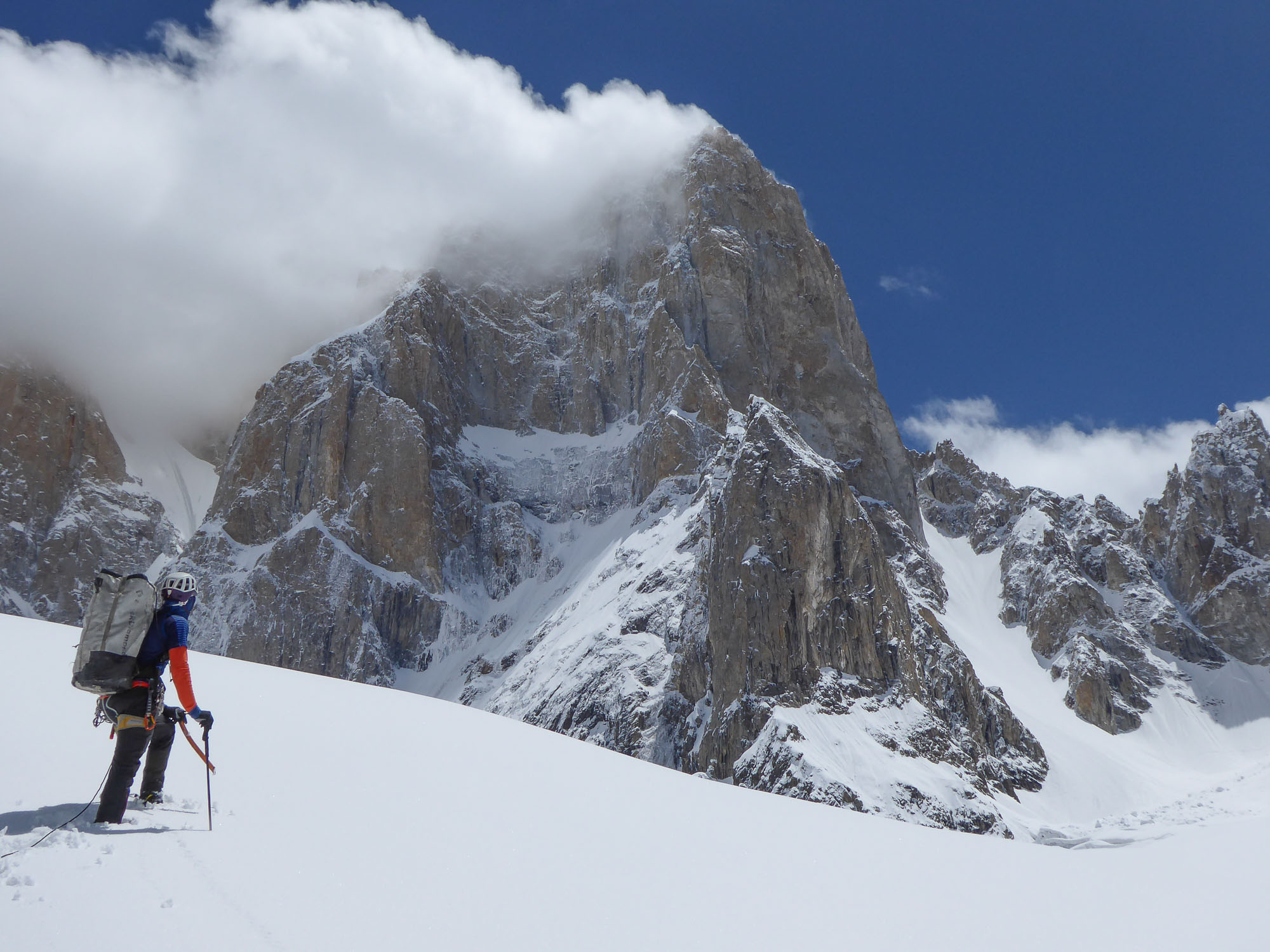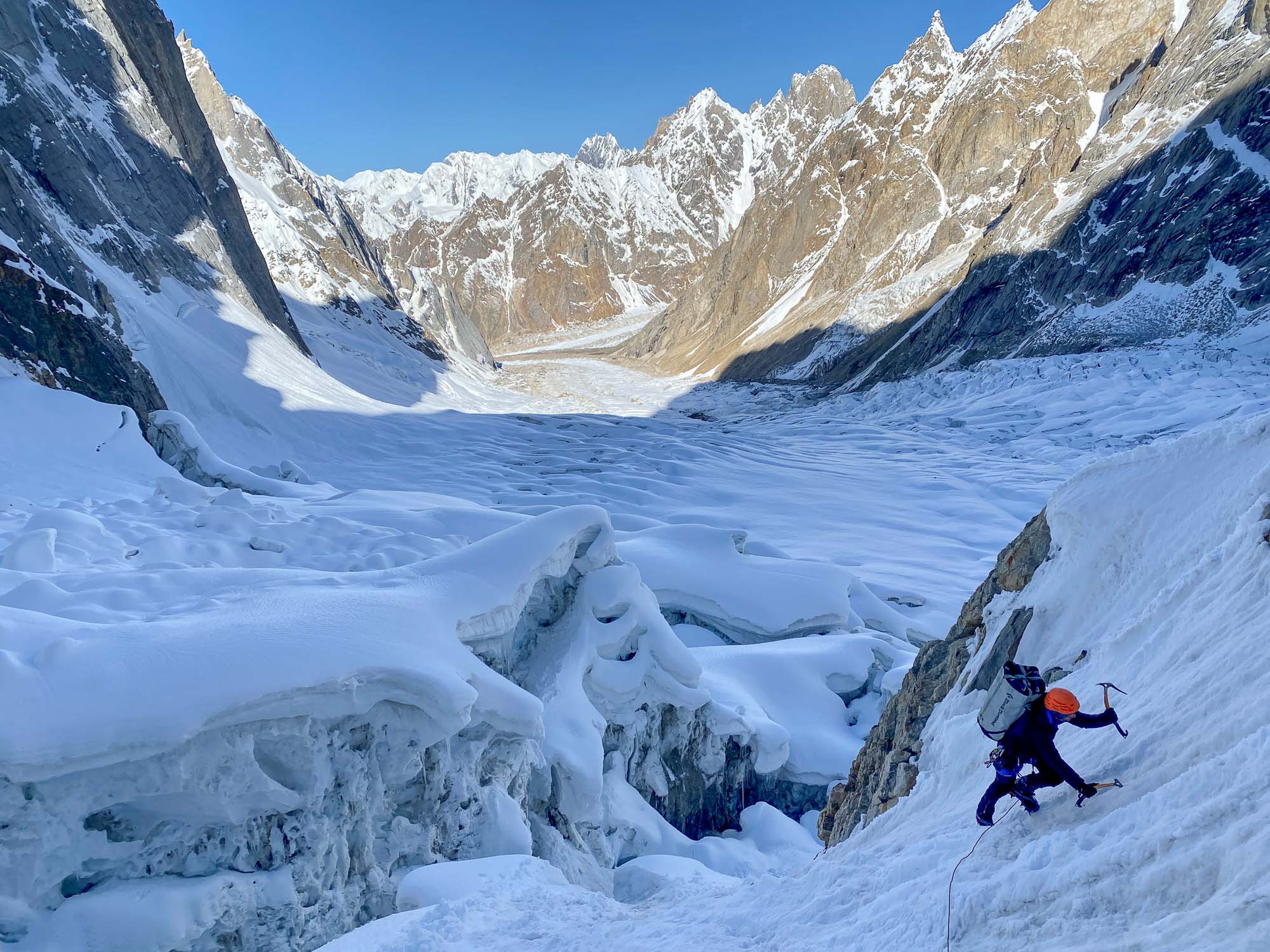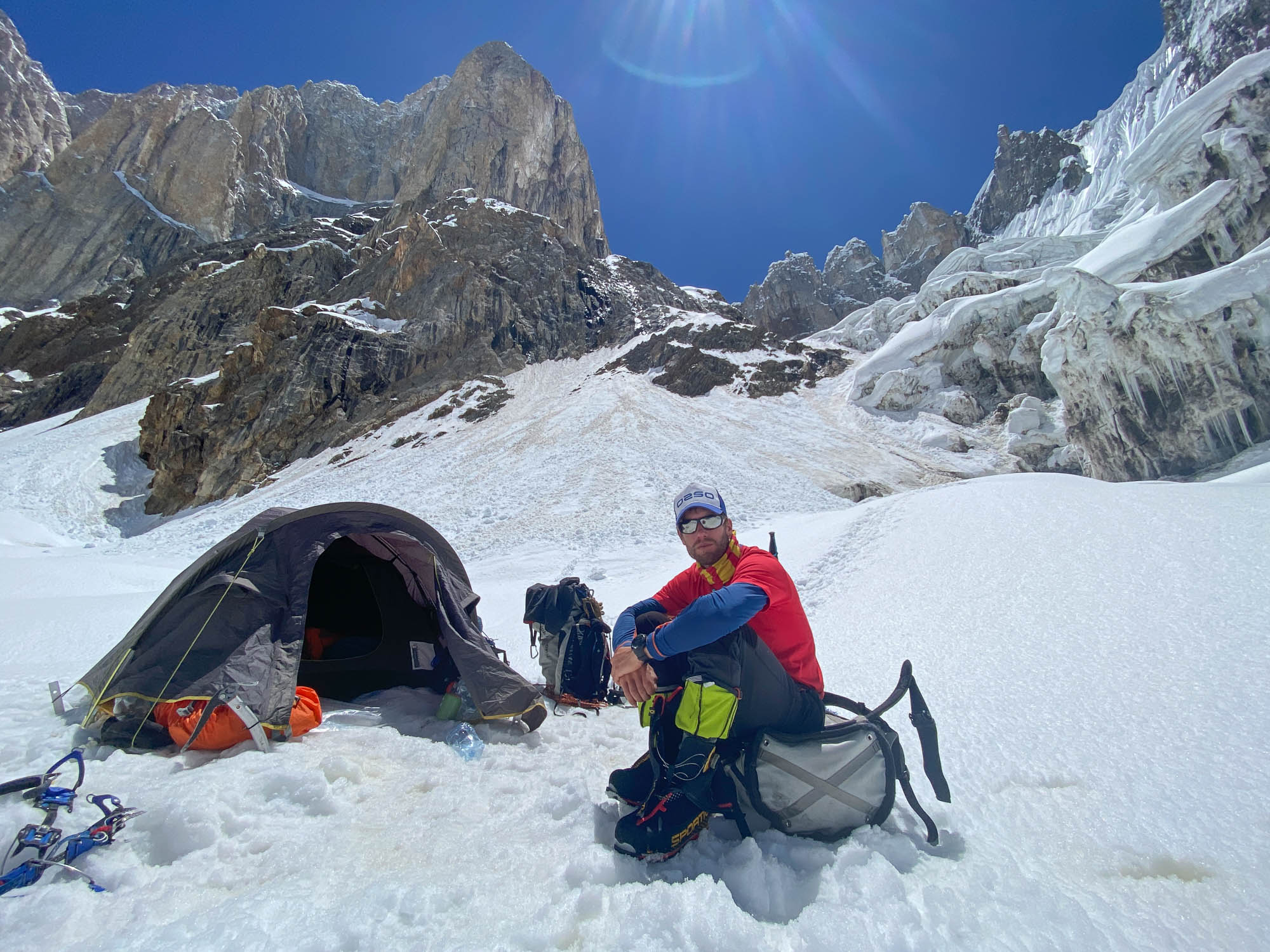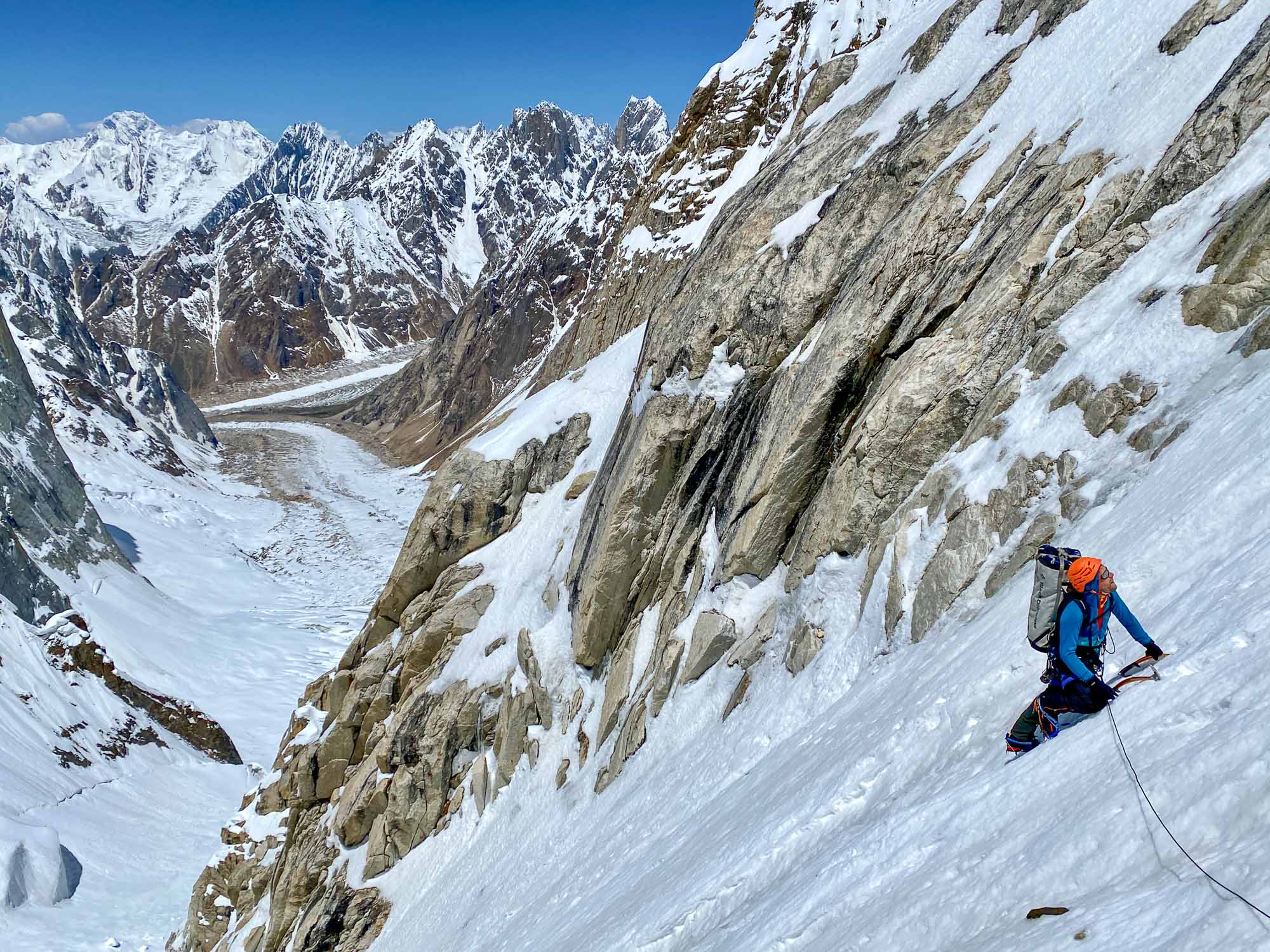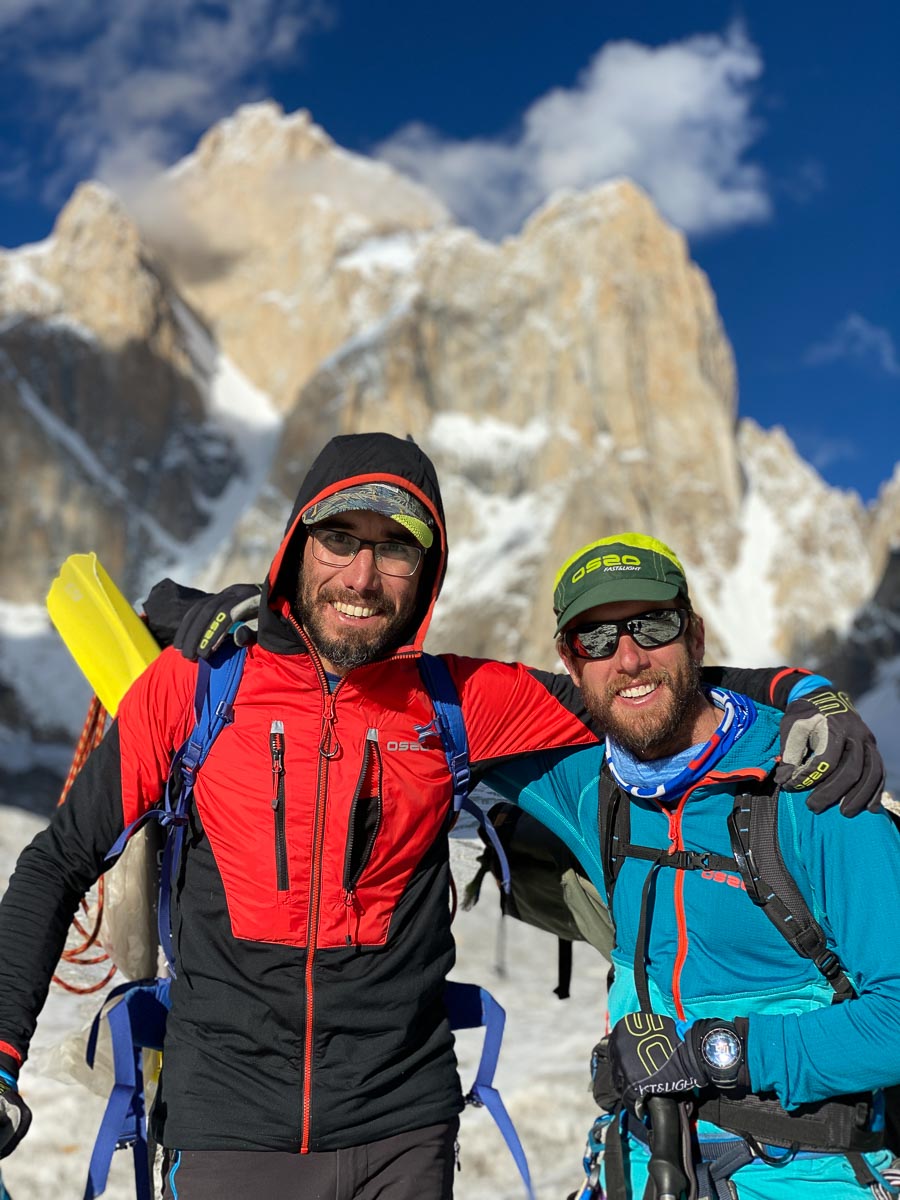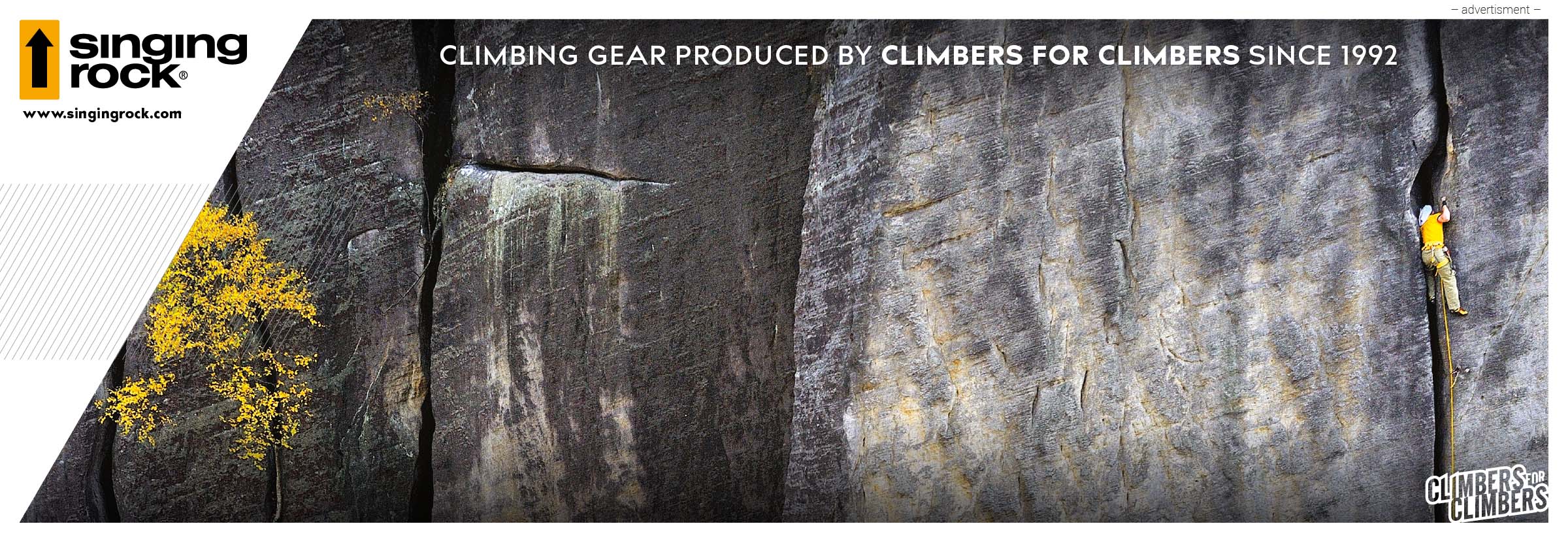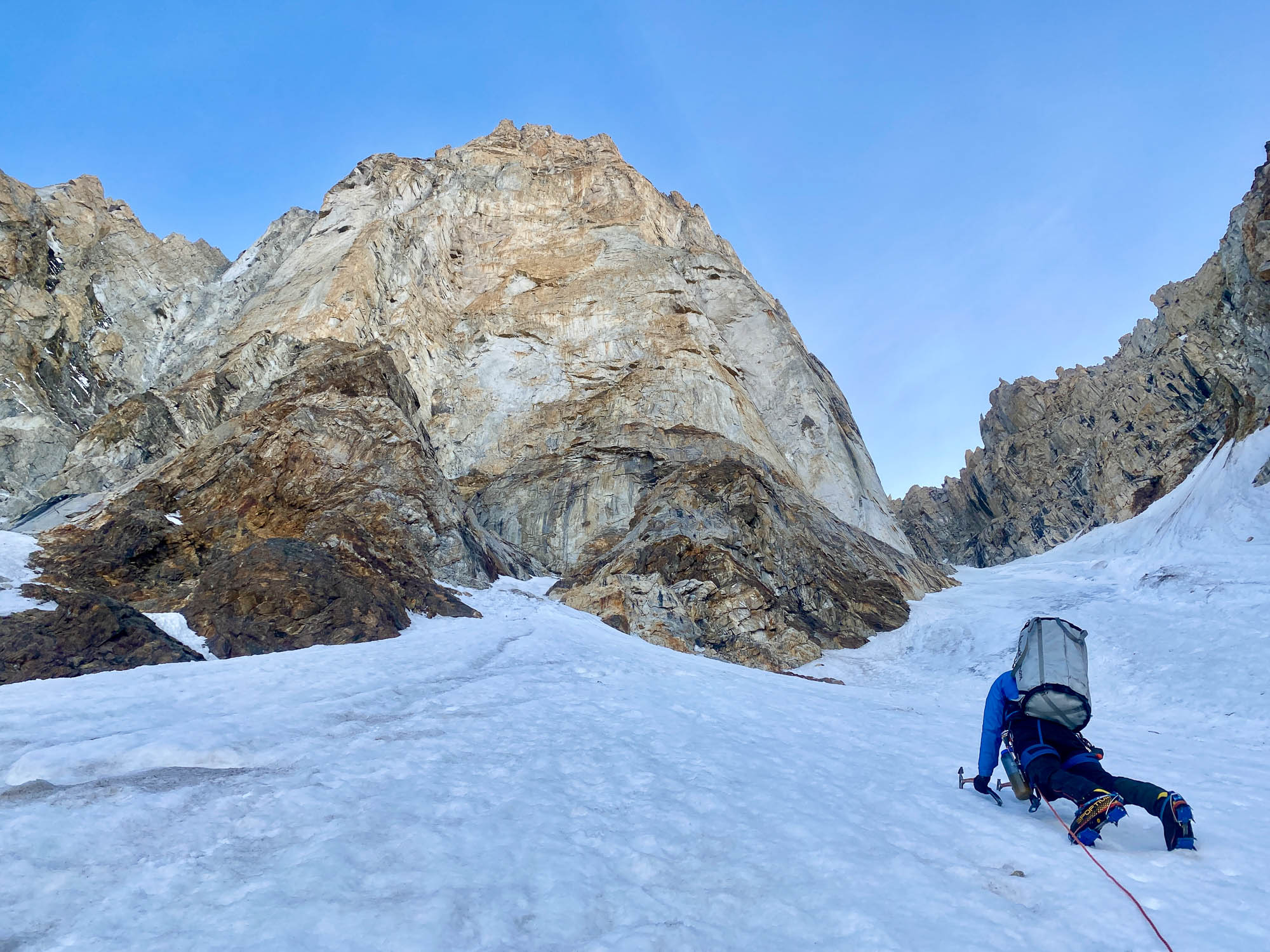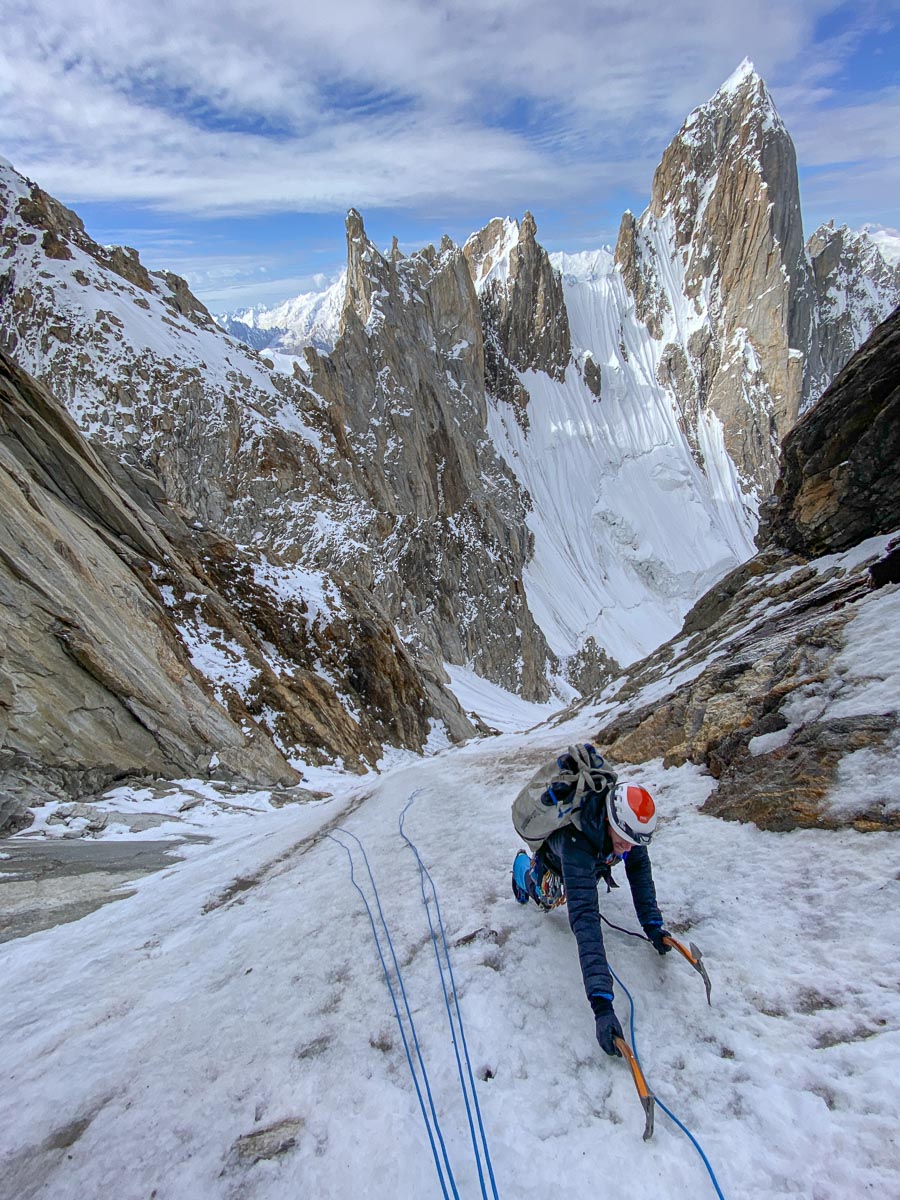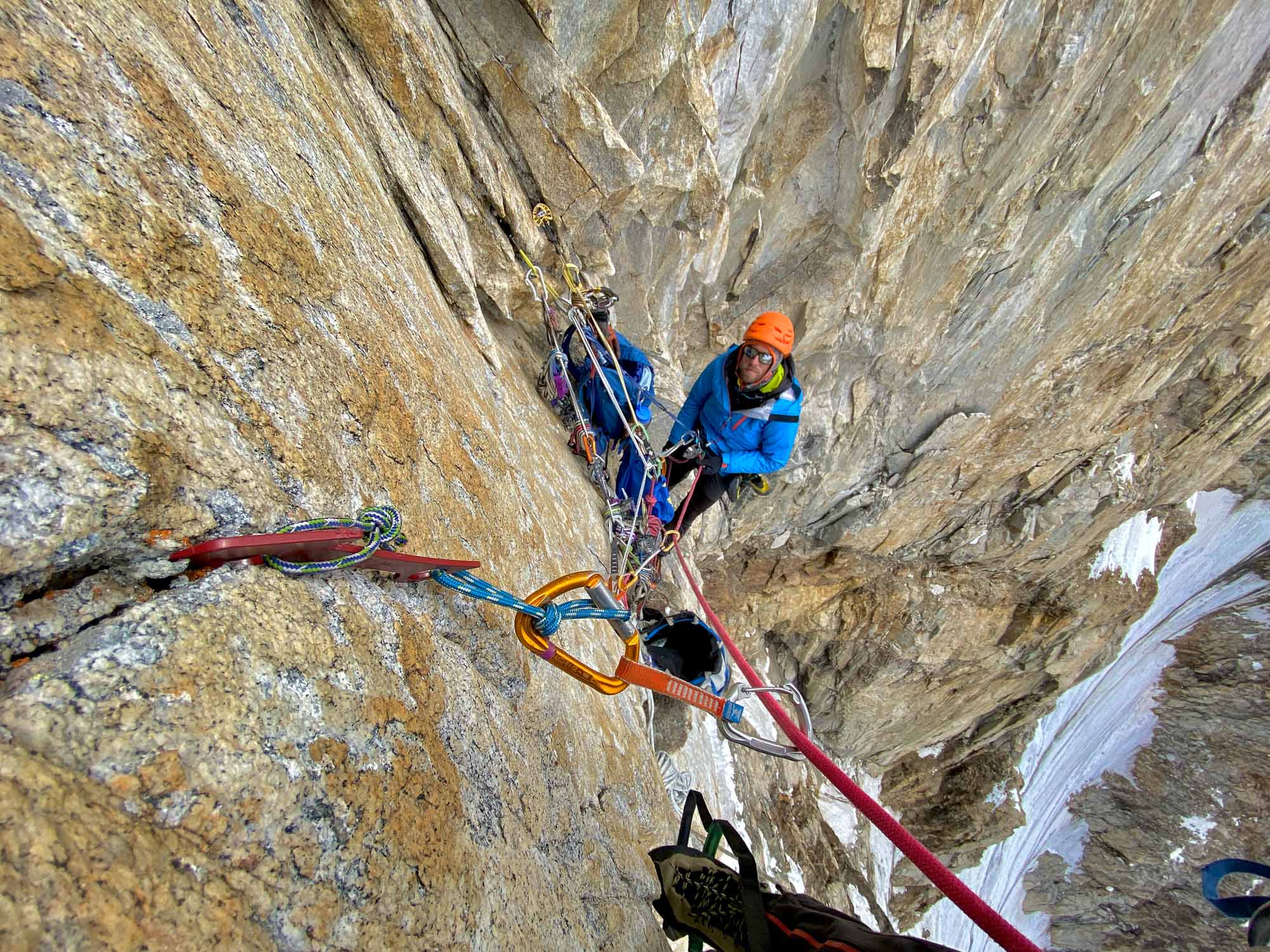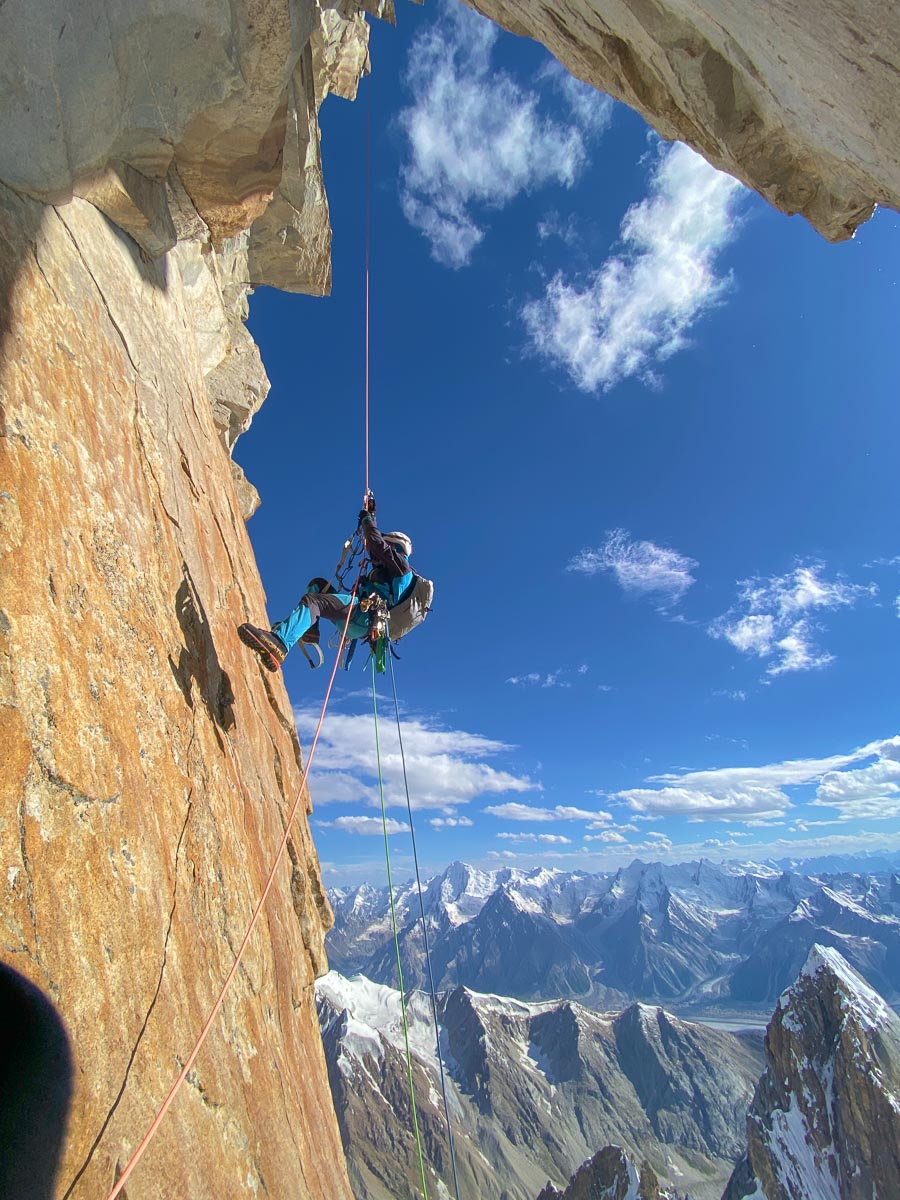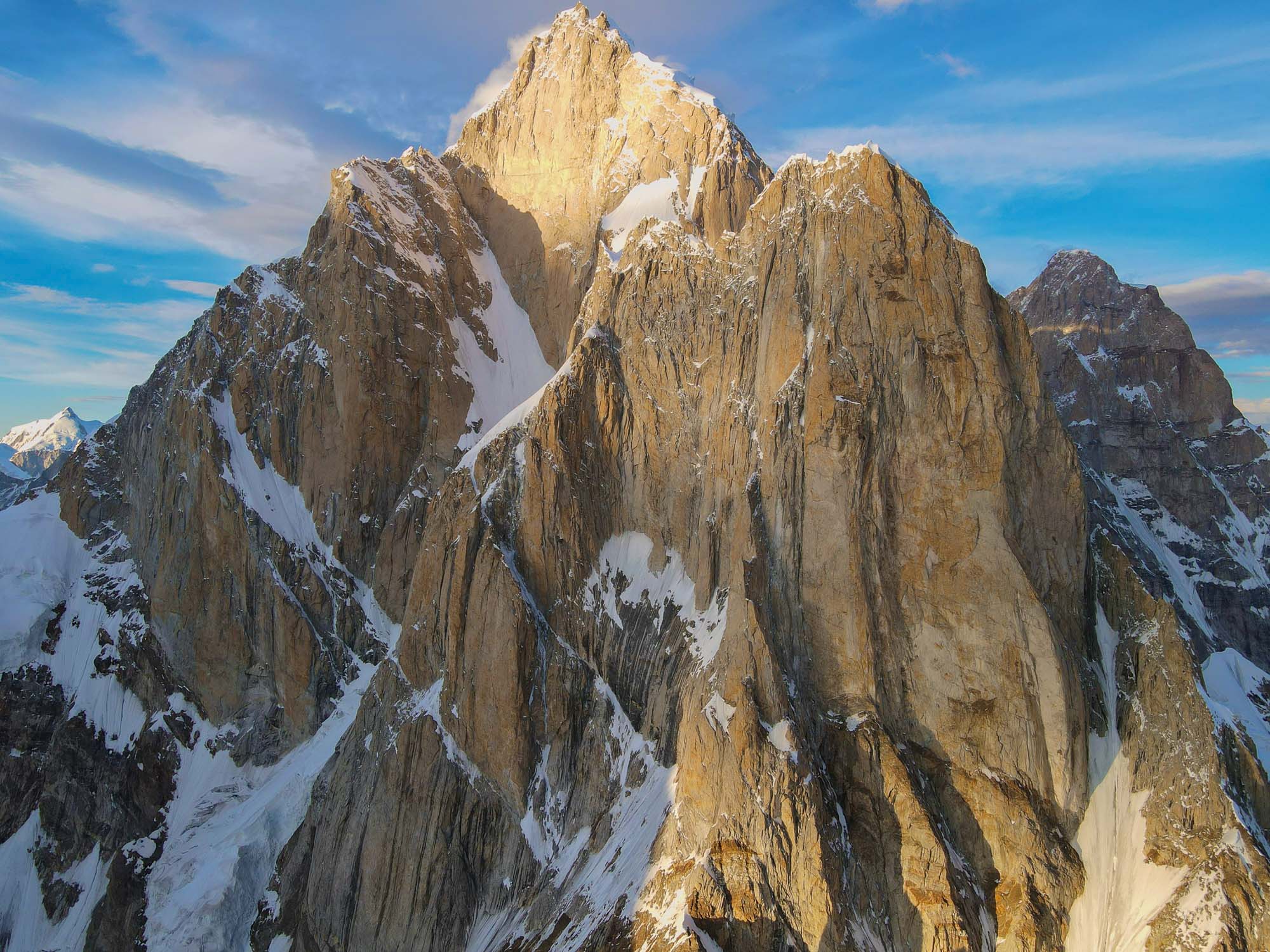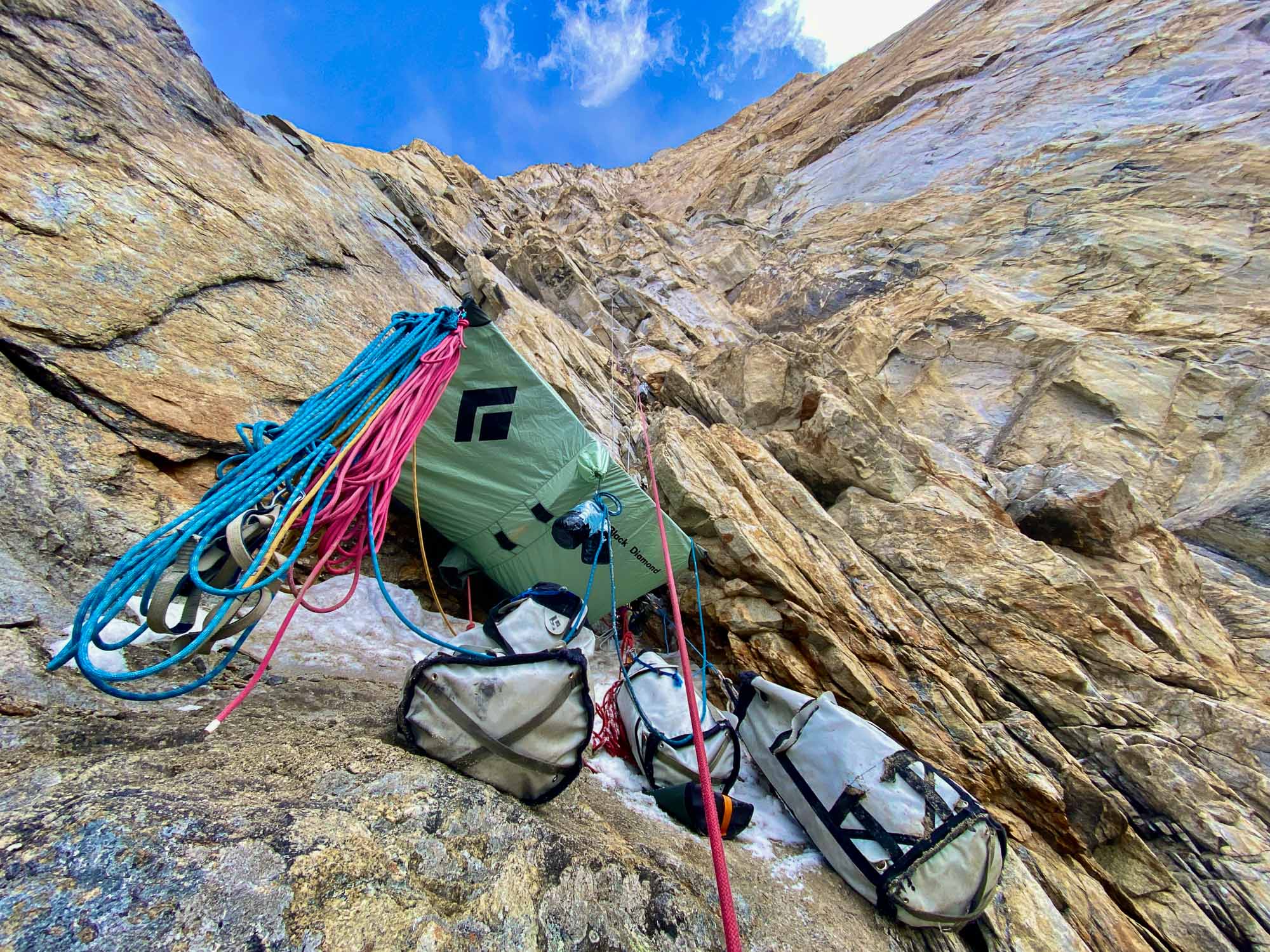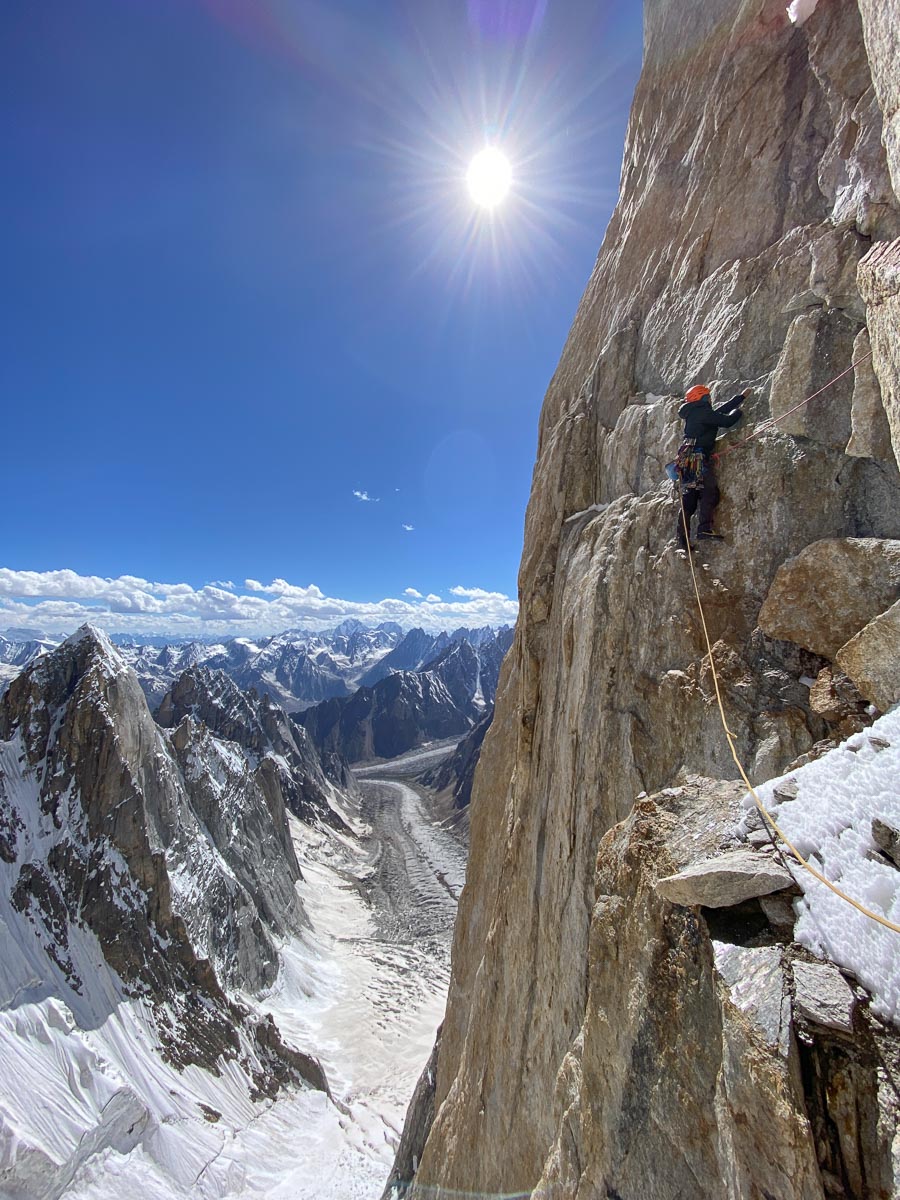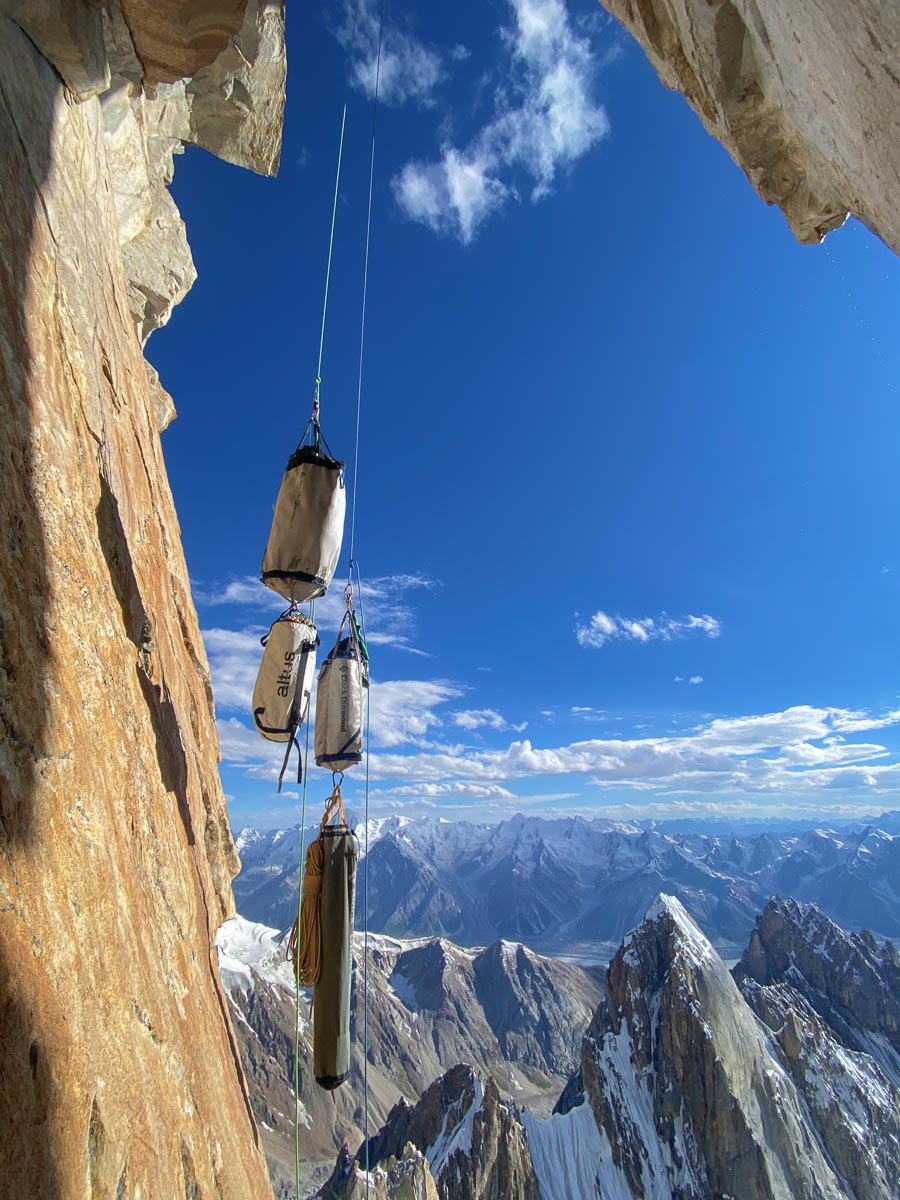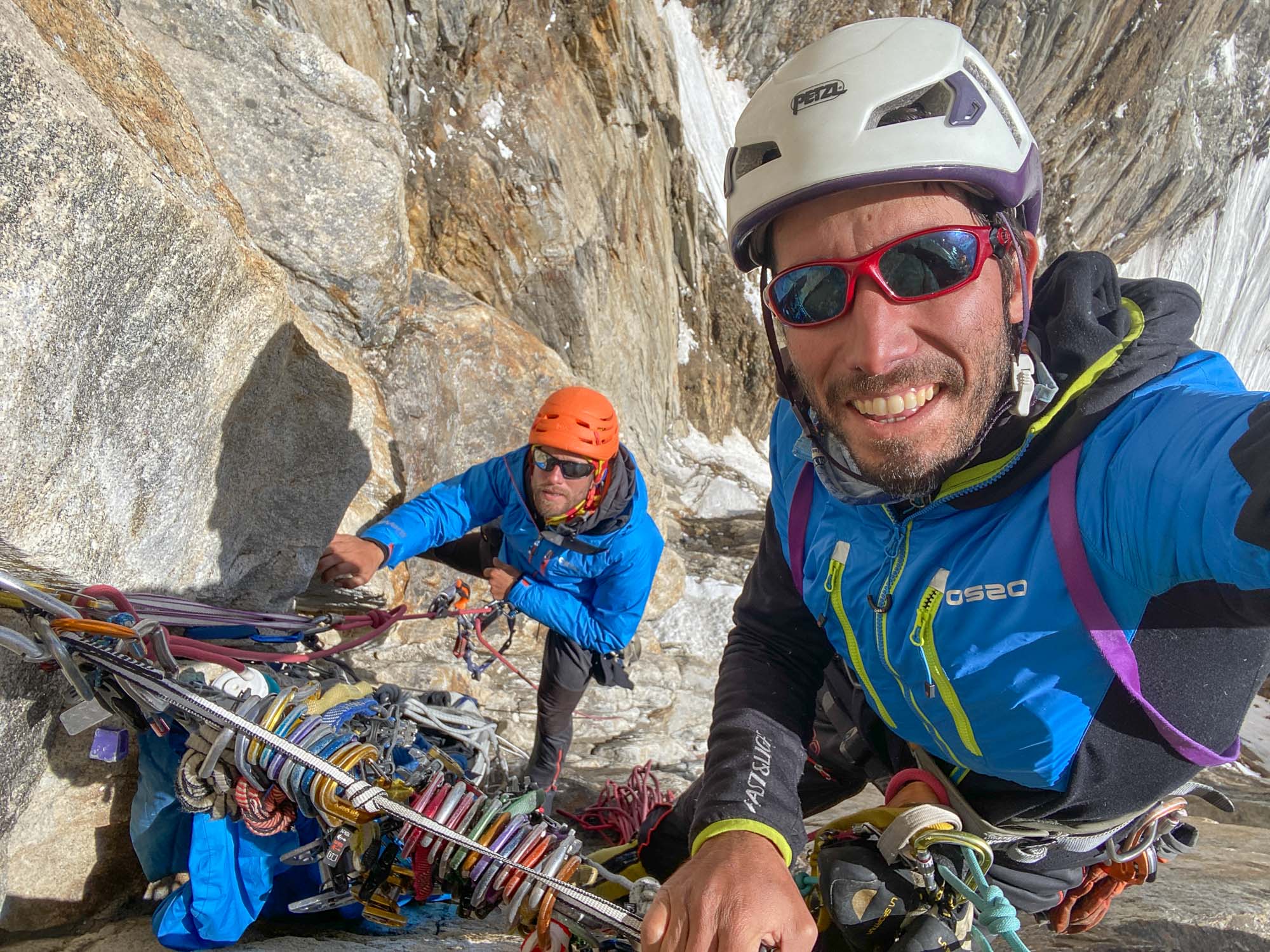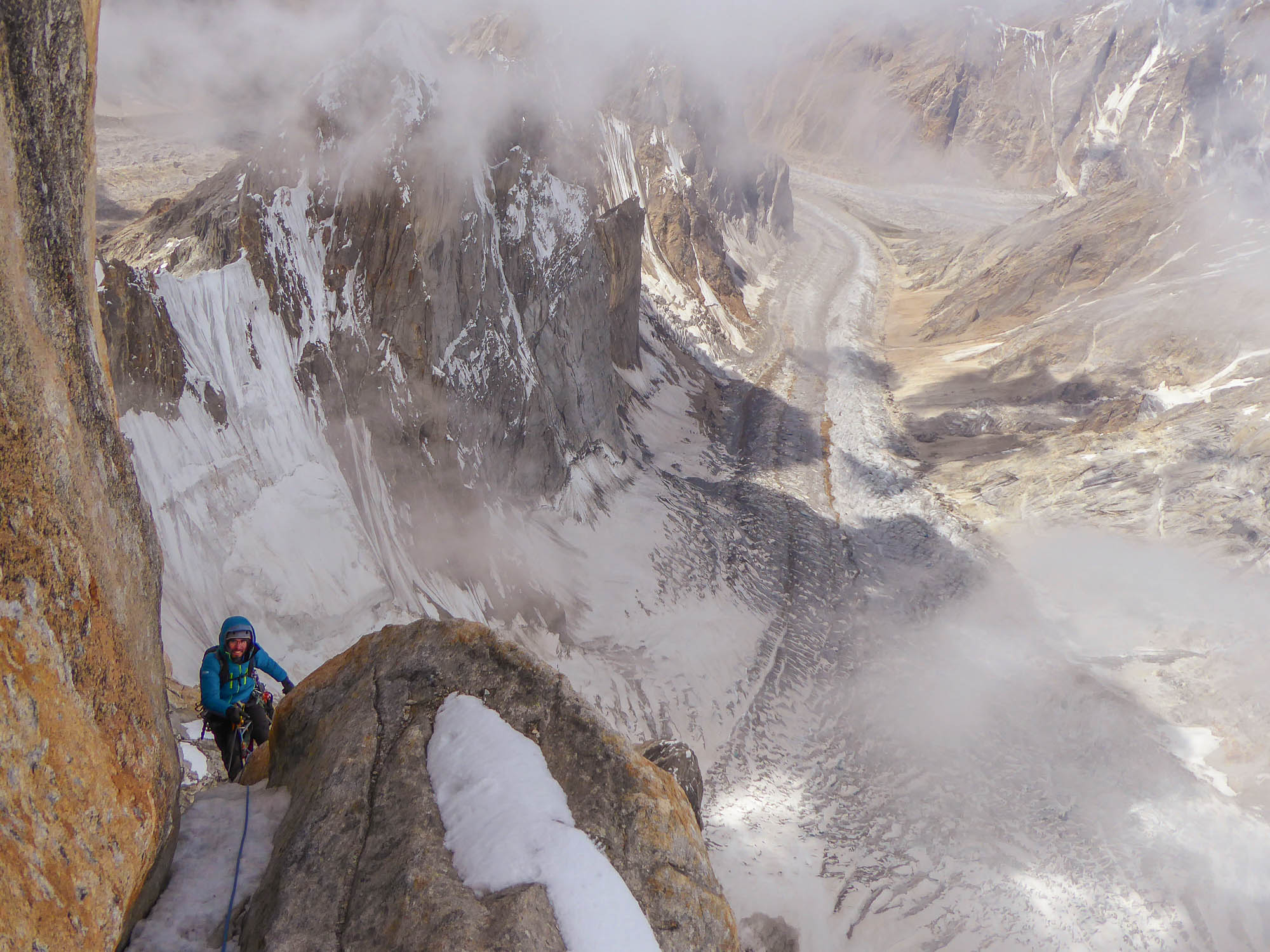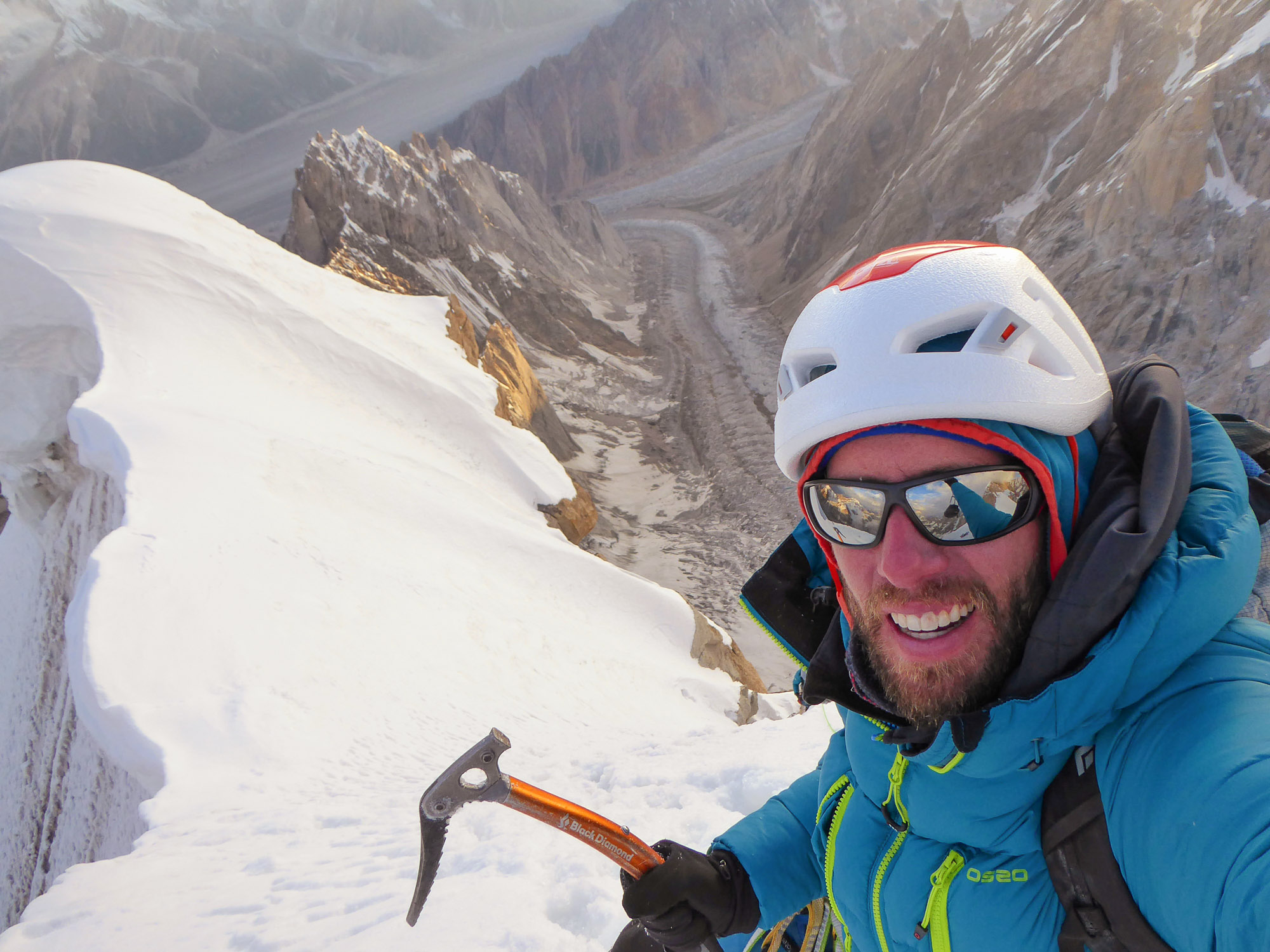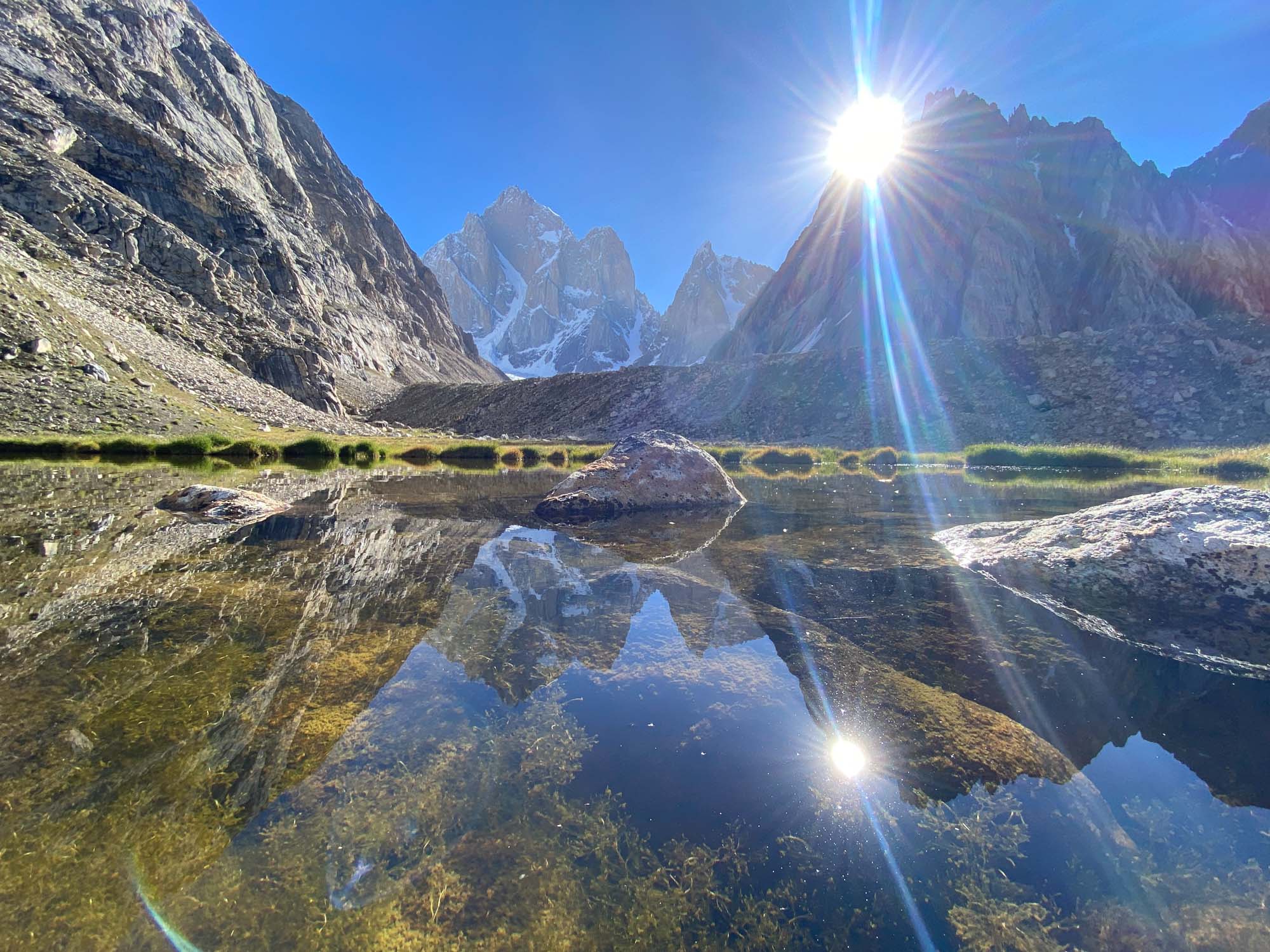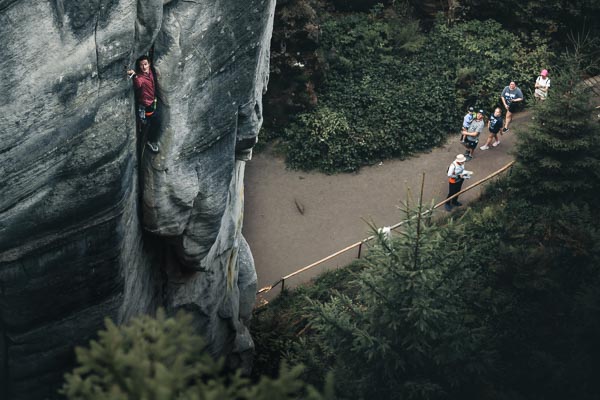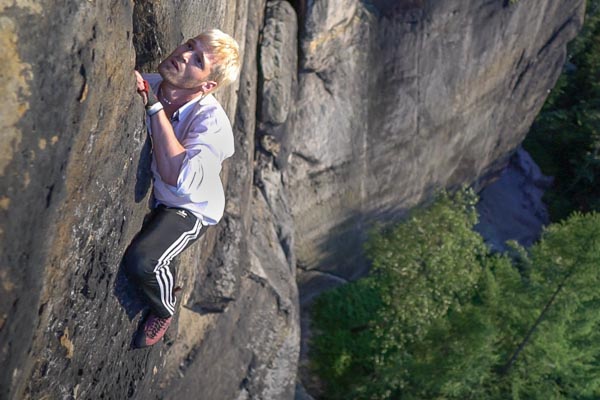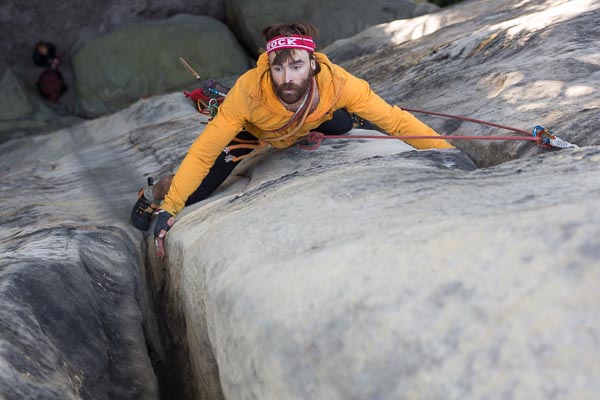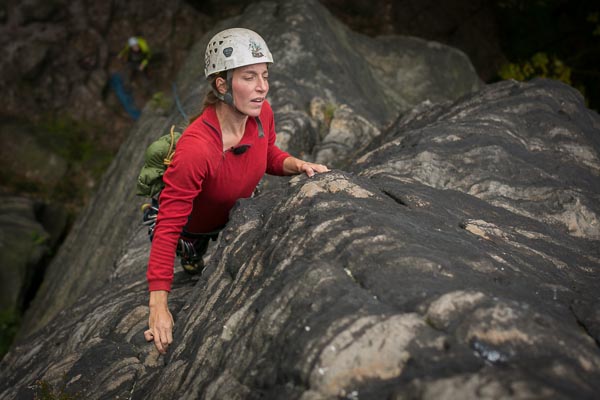MARC AND MIKI. BIG HEARTS 2023
“If Miki is fire, I am water,” says Marc Subirana of the Catalan big-wall duo. Last year they made an exceptional ascent of the virgin side peak of the famous Latok II, which they named Latok Thumb.
You’re not keeping up — you know that. In life and on the rocks. One more attempt could be made, but the day is coming to an end — it’s hard to see, or you need to catch the train home. Anyway, the project stays unfinished for today. But you feel you’ve got it and you’ll send it soon, so you leave the draws hanging in the line and hope no metal pickers rappel by. You’ll be back in a few days.
Catalan climbers Marc Subirana and Miquel “Miki” Mas did the same — the alarm only caught them halfway up the one-kilometre wall when they needed to turn back to catch their plane home. What to do now? They felt such a connection with their first ascent of Pakistan’s Latok Thumb (6380m) that they didn’t think long and made a binding booking for next year straight away. “Booking confirmed” — they had stashed most of their stuff in the wall, including three and half sets of cams, a portaledge, 400 meters of ropes, vacuumed food… They left with the vision of returning next year and hung some €8000 worth of treasure, which survived the harsh Karakoram winter.
They completed their first ascent in 2023, earning the honorary title of Big Heart 2023. What does it mean? Together with Martin Stolárik of printed Montana, we regularly select a mountain performance from the past year that strikes us for its spark and attitude. We’re after achievements with pure motivation, without much media hype, in a small team and alpine style. For this past year, we have selected Marc and Miki. The second time, they hit the wall really light — everything was waiting for them and the bet on one card paid off for the guys. This time, the pair managed to finish the first ascent of Atracció Instintiva (7a, 1100 m, A2+, M5, TOPO of individual lengths) on time.
TO FEEL READY
We sat down for an interview with Marc Subriana, who has been climbing for over 20 years and started in Catalonia, where climbers have a plenty of opportunities to get a taste of bigwall climbing in addition to sport climbing. There are big walls in the Pyrenees, in the Montrebei area (border with Aragon) or in Montserrat. In these areas, Marc gained his first experience which he has already proved by climbing five routes on El Cap. He also attempted the South African Route (7b+, 1200 m) on the central tower of Torres del Paine (2460 m) in Patagonia.
Four years ago, his long-time partner Miki suggested that they should try Latok Thumb – or rather, the peak which had not had any name at that time. But in 2020, Marc felt they weren’t ready for such a challenge.
While they had a plenty of big-wall experience, they didn’t know how altitudes above 5,000 meters would affect them. So they decided to try the well-known route by Wolfgang Güllich, Milan Sýkora, Christoph Stiegler and Kurt Albert: Eternal Flame (7c+, 650 m) on Nameless Trango Tower (5240 m) in Pakistan — to give it a go as a training affair. They were not interested in a free climb. They figured that if it went well, they’d try Miki’s Latok the following year. (We wrote about the first ascent of the main wall of Latok II in 2016 in an interview with Alex Huber, more here, author’s note).
Did it go well?
Yes, we climbed the Nameless Trango successfully. Despite a six-day period of bad weather which we spent on the “Sun Terrace” (bivouac ledge roughly one third of the main face, note by the author). So we felt we were ready for something bigger.
How big was the 2022 expedition after all? Maybe in terms of the number of porters who went with you to establish BC…
It was a 45-day-long expedition and we hired about five donkeys and ten porters.
How many sets of friends and what else?
I think we had three and half sets. Then, of course, pitons, a small drill that we used to drill about 40 bolts into the route, and three batteries. We wanted to move as fast as we could. If something harder than A2+ got in the way, we placed a bolt. We also used 400 metres of fixed rope for the climb.
By the way, according to the local regulations, did you have any locals in BC waiting for you for two weeks? I guess they were a little bored…
Yeah, we had a cook and a helper. They had a pretty rough time there — the camp is in the middle of an isolated valley and no other expeditions had visited in two years. But we had a walkie-talkie in the wall as well as a satellite phone, so we’d chat to them every night. This at least gave our cooks the feeling that they were also part of the expedition.
How about your partner Miki? How do you two actually work as a team?
We’ve been through a lot together. We’re very different. He’s very intense, strong and sometimes he explodes a little bit — he’s kind of the fire of our duo. If our climbing team consisted of just him and his copy, I’m sure there would be some trouble soon. (laughs) Probably out of rashness and too much focus. I’m completely different — I almost always stay calm and evaluate the consequences of decisions more… If Miki is fire, then I’m water. (laughs) As the two elements, we work together perfectly in all situations. We constantly tell each other our opinions and let the right decisions come out of them.
MORE TO THE RIGHT!
How do you remember your first attempt at Latok Thumb?
The first year we were rather discovering the wall. There were a few unpleasant situations — the wall reminded us that this is not a game, but a serious business. Once a piece of rock fell on us, the second time a piece of ice with an avalanche. It dented a hole in my helmet… Miki got hit in the shoulder… It happened because we got into the snowy couloir too late — in the afternoon. Our mistake.
The first days we had to carry our stuff through the glacier area to the first belay. In other words: a lot of effort! There were only two of us but we didn’t want anyone else, because we knew that these are exactly the moments you have to suffer with a friend in whom you have 100% confidence. For example, we climbed Eternal Flame with Edu Marín, but in the end, we didn’t really get along with him — probably because of the pressure from his sponsors. So we said, “Next time we’re just going as a pair. It’s going to be hard, but we’ll make it.“
You didn’t have any crises with Miki?
The first year, Miki was quite nervous. The loneliness and the size of the walls in Pakistan had a big effect on us… And nervousness in a team is not good — it’s contagious. When I was leading, Miki kept shouting at me from the belay: “You’re going wrong! More to the right.” And so on. He was always leading me somewhere. And sometimes he didn’t even see me because I was around the corner. (laughs) “You’d better change it,” I said, “or we’ll rappel down and forget it.” We discussed it, he apologized, changed his attitude, and we continued up…
What kind of unnecessary things did you have with you? Flute, books?
Yeah, books. (laughs) Periods of bad weather are indispensable on a bigwall climb… You’re lying on the portaledge thinking about the world below… About climbing… You read… It’s perfect…
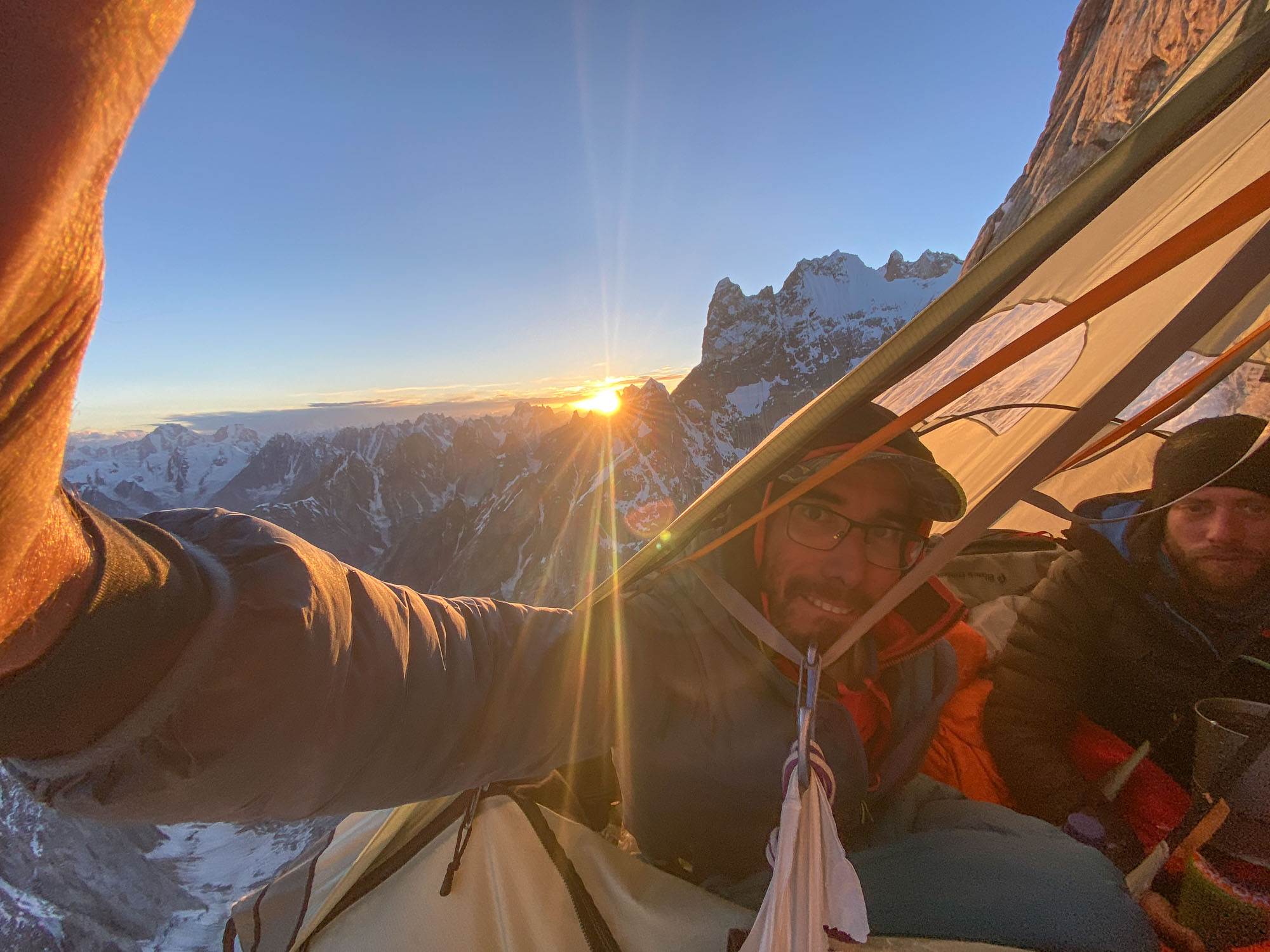
STORAGE DURING TRANSPORT
Why didn’t you finish the climb in 2022?
We didn’t have enough time. The difficulties that awaited us there were much harder than we had planned. Hard free climbing, hard aiding, roofs and overhangs… A few days before the end of our expedition, we were only halfway up the wall. So we decided to retreat. On the way down, we improved the belays, which were mostly made of friends and pitons. We drilled fixed belays which allowed us to release the friends so that they would not be waiting for us for a year somewhere under the snow in the cracks…
How about the “luggage storage” for next year? Did you leave the stuff in the haulbags on the first belay?
There were some ropes waiting on the first belay, but we set up our main stash on the belay number six, which was our first wall camp. We had a lot of stuff there. Then the next stash was on the highest point, at the end of the thirteenth pitch. Yes, we had it in the haulbags. There was a good chunk of money hanging there.
How much?
I really can’t even count. (laughs) (While authorising the interview, Marc added the estimated amount of €8,000, author’s note).
And how did it survive?
When we returned a year later, the portaledge sails were a bit covered in fungus, but otherwise everything had survived just fine. Well, except for some food and two fixed ropes that got destroyed during that time. I guess some rocks or ice fell on them. So we had to climb those two pitches again.
Wait, you guys went back to the fixed ropes after a year and started jugging on them?
Yeah, it was scary, but the previous season, we had prepared them really carefully. We also tried to make eye contact with the belay so we could always see the full length of the fix rope. And we used a backup belay on the first go.
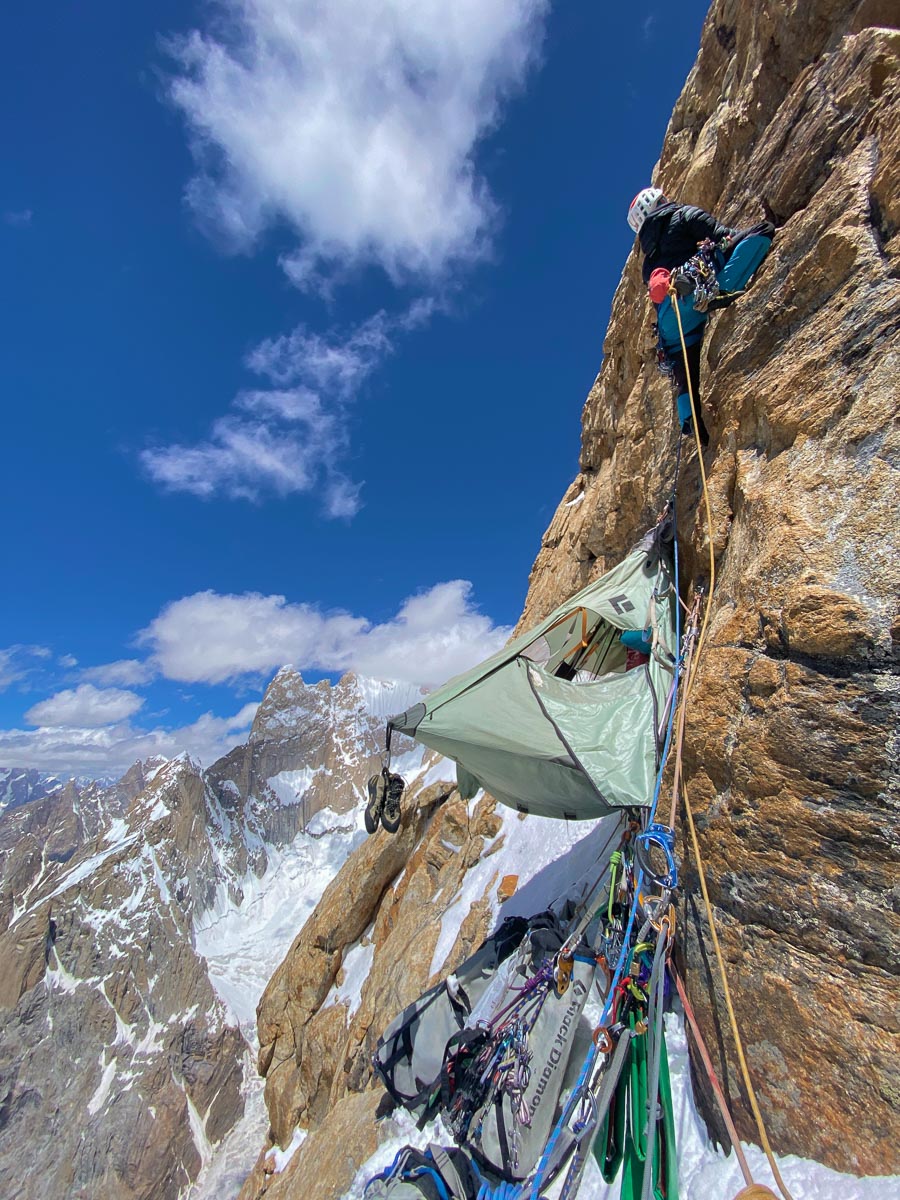
BACK IN THE WALL
How was last year’s attempt better?
We already had knowledge of how the mountain behaves — especially in the area of approach and lower pitches. Higher up, we found that we were not able to pull our camp above pitch 13. We discovered another camp option 400 metres above the first camp. Quite far. So we fought through this part first and returned to C1. It meant spending maybe three hours on the jümar in the morning — you got tired and then started climbing before it got dark. We only had five hours of light on the wall a day. When we had fixed it all up to the second camp site, only then could we start hauling our stuff…
What about the climbing itself? I hear some of the lengths were pretty airy…
Yeah, for example, the 12th pitch was really tricky. You were traversing from a corner, where you put a few micro cams… Miki did it on his first go – from the corner he continued to a smooth arete where he was able to put another piece of protection. If he’d fallen there, he would have pendulumed about six metres across, and it’s questionable whether the micro cams would’ve held. Quite a dangerous length. We graded it 7a.
Have you fallen occasionally?
Not really big flights, maybe only eight metres. Nothing to speak of.
Do you remember any funny moments?
There don’t seem to be any funny moments on routes like this. You feel like you’re in danger all the time, like you’re under the threat of a rock fall… Once, we passed a big loose block that you could move with your hand. We’d love to knock it over, but we’d destroy our portaledge down below. So we’d pretend like it was nothing and keep going. We didn’t drop it until we had the camp and all the ropes above it.
DANGEROUS GRAVITY
Strongest memory?
Of course, when we stood on top, that was something. At the top we were met with a kind of incoherent overhanging snow, a strange, fragile cornice… Even there we had to be very careful. It was quite untypical — I climbed the last 40 meters to the top, where I found I couldn’t make any belay. So I downclimbed back to my partner: “Miki, we can’t climb up there together. Now you go again.” I didn’t take any pictures, Miki clicked something. I said, “But hurry up, it’s almost seven o’clock.” The sun was disappearing behind the horizon and soon we were going to start rappelling.
During the summit day, we’d pretty much given up our strength and hadn’t drunk much. We were completely shredded and couldn’t even start rappelling. Even the movement around the portaledge was loading us up. Pretty scary feeling… So we decided to rest one more full day, melt as much snow as possible and drink properly. Luckily the weather allowed us to do that.
What did you leave behind in the wall? Apart from the bolts on the belays.
We left one fixed rope in the big overhang and the other in one traverse. That made the descent safer. We started rappelling at 1:30 a.m. to get down through the whole wall and the rappel couloir before 9 a.m., when the sun leans into it and it gets dangerous.
Why did you choose the name Instinctive Attraction?
We really felt it explained well our connection with the mountain — especially Miki, when he told me back in 2020, “I’ve discovered the perfect unclimbed big wall.” The fact that we waited a whole year to continue our climbing also confirms this relationship. The route kept drawing us in and more or less occupying our minds while the material was waiting for us.
„The route kept drawing us in and more or less occupying our minds while the material was waiting for us.“
Will you share your future visions?
I work as a mountain guide, so my job is to help people into the mountains to make their ascents safe. I take safety as the most important thing. In Pakistan, I felt threatened everywhere… We made a nice first ascent of a big wall, but we spent two years, spent a lot of money… I guess it made us a bit famous, got us into various climbing magazines and websites… But I’m not sure it was worth it.
When you put your life in danger to achieve something, it’s fragile. If everything works out, it’s cool. But if it doesn’t, you could die out there. So where’s the line? How much can you bet in roulette? I don’t think it’s worth risking your life for a gig like this. But on the other hand, Miki is excited about it and determined to keep taking those risks. “We have to be mentally strong and go to the mountains to face these dangers,” he says. He asked me if I would go with him to India in the summer to climb another big wall he found… And I told him: “No, Miki. I want to rest this summer.“
I plan to be with my girlfriend and move with her to a new house near Chamonix. I certainly don’t have the determination to go to the glacial highlands for the fourth time in a row. I really need the mental rest. My partner told me: “If it’s not with you, I’m not going anywhere.” (laughs) Well, yeah, but Miki’s already got a lot of other plans — so I guess we’ll try some of that in 2025. (laughs)
The Most Sympathetic Performance of the Year (small teams, great style)
2013
Jirka Pliska and Ondra Mandula – first ascent on na Uzum Brakk, Pakistan
2014
Cyrill Bösch, Elias Gmünder, Arunas Kamandulis a Gediminas Simutis – first ascent on Lotus Tower, India
2015
Marek “Regan” Raganowicz and Marcin Tomaszewski for a new route in the Troll Wall, Norway
2016
Jindřich Bednář and Michal Plunder for the first Czech ascent of Nameless Trango Tower, Pakistan
2017
Pavel Kořínek and Leoš Husták (who returned 300 m below the summit) for the first Czech ascent of Minya Konka. Daxue Shan, China
2018
Hansjörg Auer for his solo ascent of Lupghar Sar West in Karakoram, Pakistan
2019
Eneko and Iker Pou for the first ascent of the “Latin Brother” route on Midi d’Ossau in the Indian Himalaya
2020
Silvia Vidal for the solo first ascent of “Sincronia Magica” on Chileno Grande in Patagonia, Chile
2021
James Price for solo first ascents on Passu East, Passu North and Maidon Sar in Karakoram, Pakistan
2022
Caro North, Capucine Cotteaux and Nadia Royo Cremer for the women’s first ascent of “Via Sedna” in Greenland
.
__________

